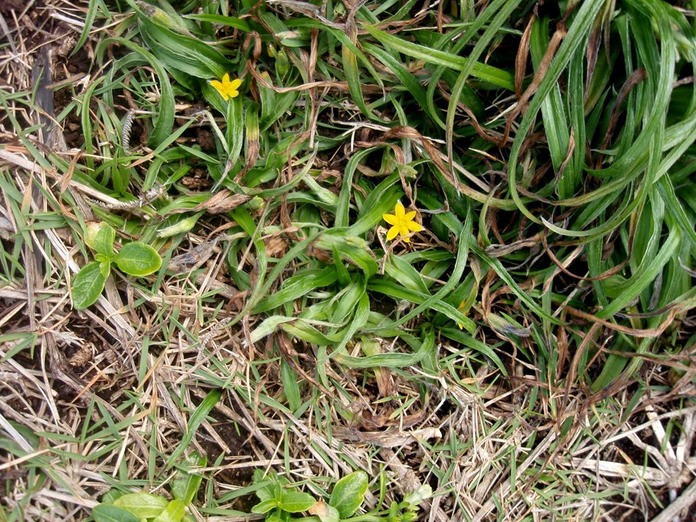BotKitDVT > Plantes de La Réunion > AUTRES PLANTES, DIVERS > Hypoxis angustifolia - HYPOXIDAC..rtfd - 5 Oct 2020 at 06:24:47
Topic: Hypoxis angustifolia - HYPOXIDAC.
Hypoxis angustifolia - HYPOXIDAC. - Afr., Mada., B, M
Photo
/Users/fduban/Desktop/p1010042_01_med.jpeg
URL
Descriptif
Wikipedia
Kingdom:
(unranked):
(unranked):
Order:
Family:
Genus:
Hypoxis
• Upoda Adans.
• Schinnongia Schrank.
• Niobea Willd. ex Schult. & Schult.f.
Hypoxis is a genus of flowering plants belonging to the family Hypoxidaceae. The genus has an "almost cosmopolitan" distribution, occurring in Africa, the Americas, Asia, and Australia.[2] Europe lacks native species.[3] Most species are in the Southern Hemisphere, especially in southern Africa.[4] Common names for the genus include star-grass,[4] star lily, yellow stars, African potato,[2] and stars.[5]
Description
These plants are perennial herbs with corms or rhizomes. Some have tubers. The aboveground herbage is a layered cluster of lance-shaped, linear, or hairlike leaves, sometimes sheathed together at the bases. The blades are usually at least slightly hairy. The flowers are borne on a short, stemlike scape in a raceme or umbel arrangement, or sometimes singly. The flower has six yellow tepals which may be hairy, especially on the undersides. The undersides may also be whitish or tinged green or red. Occasional flowers have 4 or 8 tepals. The fruit is a capsule with a few to many small, oily seeds.[2][4][5]
The seeds are needed to identify many species. Most have seeds less than 2 millimeters long, so microscopic examination is required.[6]
Uses
Hypoxis plants have long played a role in traditional African medicine; H. hemerocallidea and H. colchicifolia are the best known species used to make medicine and teas. The corms of the former are used in the treatment of AIDS,[7] and the plant has been called a "wonder herb" and "miracle cure".[2] Hypoxis roots are widely touted as boosters of immune system function in AIDS patients by the media and even by the South African Ministry of Health.[7] This claim has not been tested in research.[2]
Species

